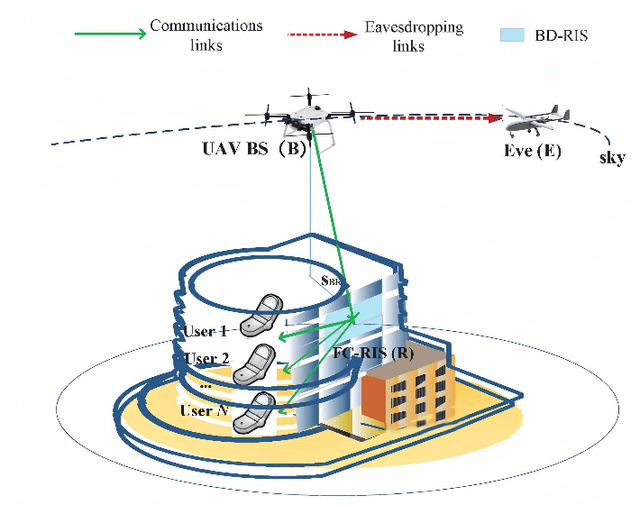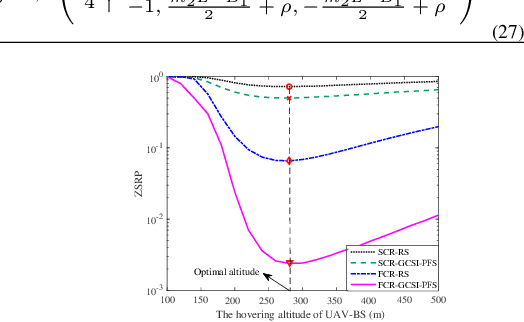Yulong Zou
Securing FC-RIS and UAV Empowered Multiuser Communications Against a Randomly Flying Eavesdropper
Aug 26, 2024


Abstract:This paper investigates a wireless network consisting of an unmanned aerial vehicle (UAV) base station (BS), a fully-connected reconfigurable intelligent surface (FC-RIS), and multiple users, where the downlink signal can simultaneously be captured by an aerial eavesdropper at a random location. To improve the physical-layer security (PLS) of the considered downlink multiuser communications, we propose the fully-connected reconfigurable intelligent surface aided round-robin scheduling (FCR-RS) and the FC-RIS and ground channel state information (CSI) aided proportional fair scheduling (FCR-GCSI-PFS) schemes. Thereafter, we derive closed-form expressions of the zero secrecy rate probability (ZSRP). Numerical results not only validate the closed-form ZSRP analysis, but also verify that the proposed GCSI-PFS scheme obtains the same performance gain as the full-CSI-aided PFS in FC-RIS-aided communications. Furthermore, optimizing the hovering altitude remarkably enhances the PLS of the FC-RIS and UAV empowered multiuser communications.
Interference Management by Harnessing Multi-Domain Resources in Spectrum-Sharing Aided Satellite-Ground Integrated Networks
Oct 23, 2023Abstract:A spectrum-sharing satellite-ground integrated network is conceived, consisting of a pair of non-geostationary orbit (NGSO) constellations and multiple terrestrial base stations, which impose the co-frequency interference (CFI) on each other. The CFI may increase upon increasing the number of satellites. To manage the potentially severe interference, we propose to rely on joint multi-domain resource aided interference management (JMDR-IM). Specifically, the coverage overlap of the constellations considered is analyzed. Then, multi-domain resources - including both the beam-domain and power-domain - are jointly utilized for managing the CFI in an overlapping coverage region. This joint resource utilization is performed by relying on our specifically designed beam-shut-off and switching based beam scheduling, as well as on long short-term memory based joint autoregressive moving average assisted deep Q network aided power scheduling. Moreover, the outage probability (OP) of the proposed JMDR-IM scheme is derived, and the asymptotic analysis of the OP is also provided. Our performance evaluations demonstrate the superiority of the proposed JMDR-IM scheme in terms of its increased throughput and reduced OP.
 Add to Chrome
Add to Chrome Add to Firefox
Add to Firefox Add to Edge
Add to Edge